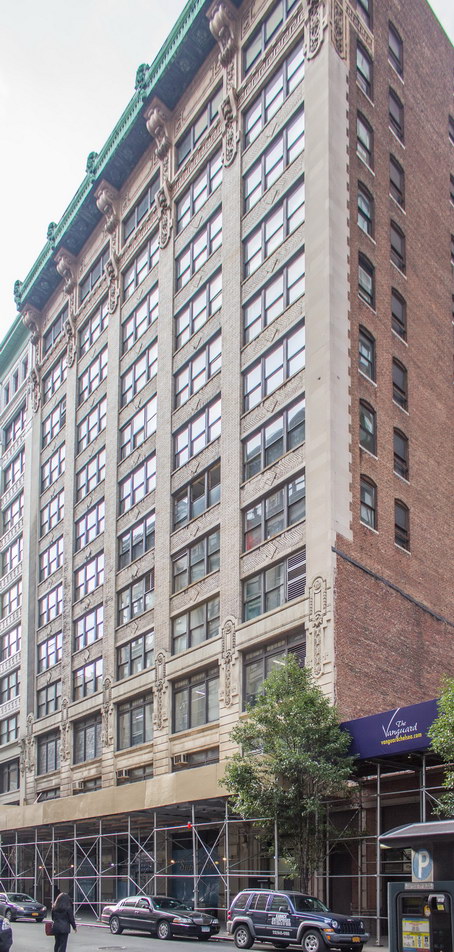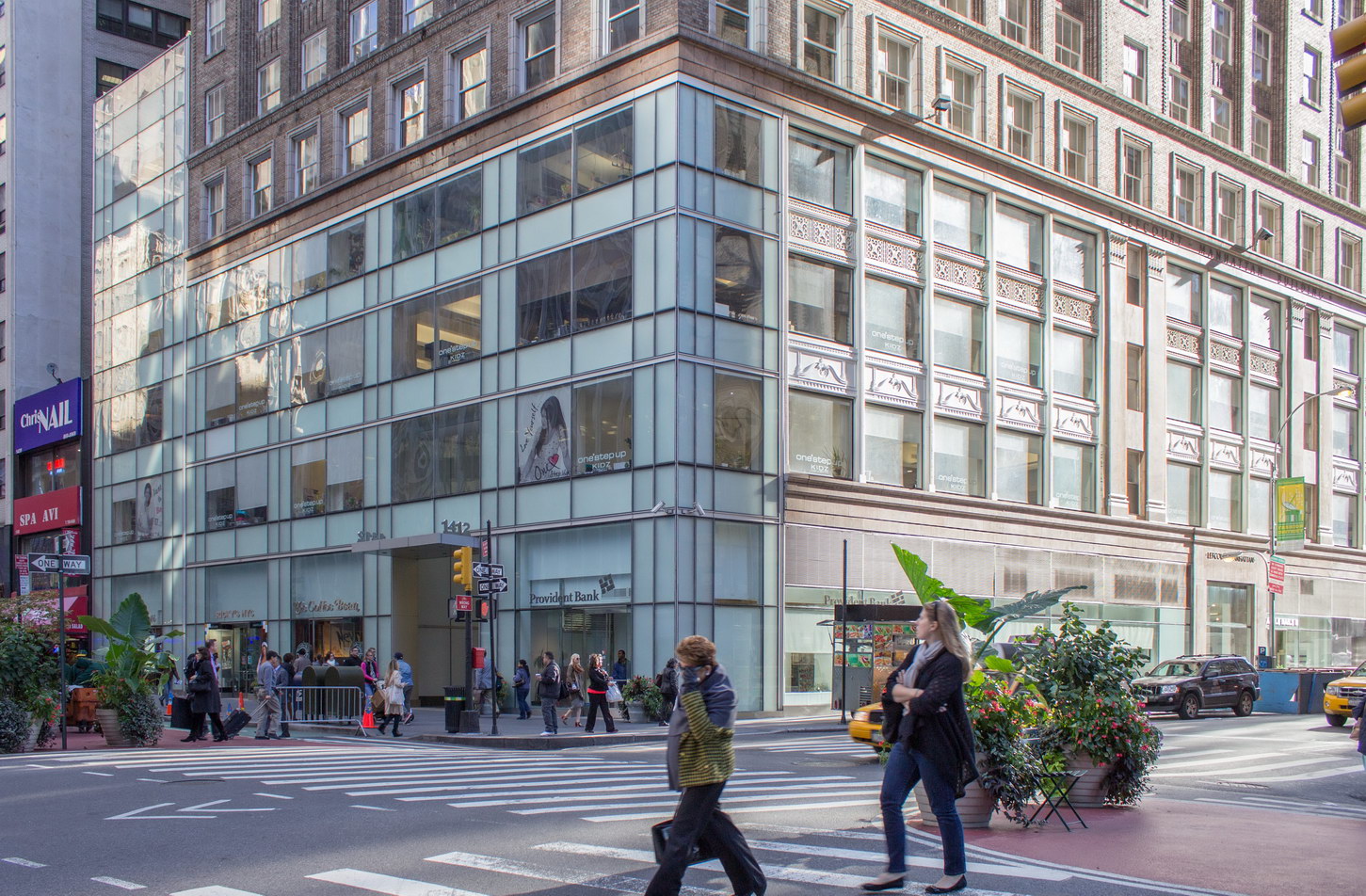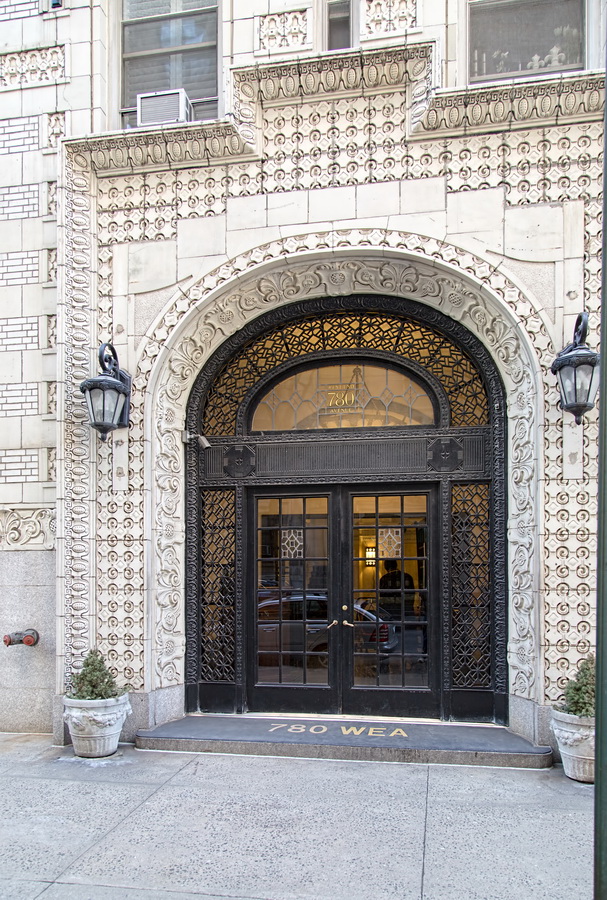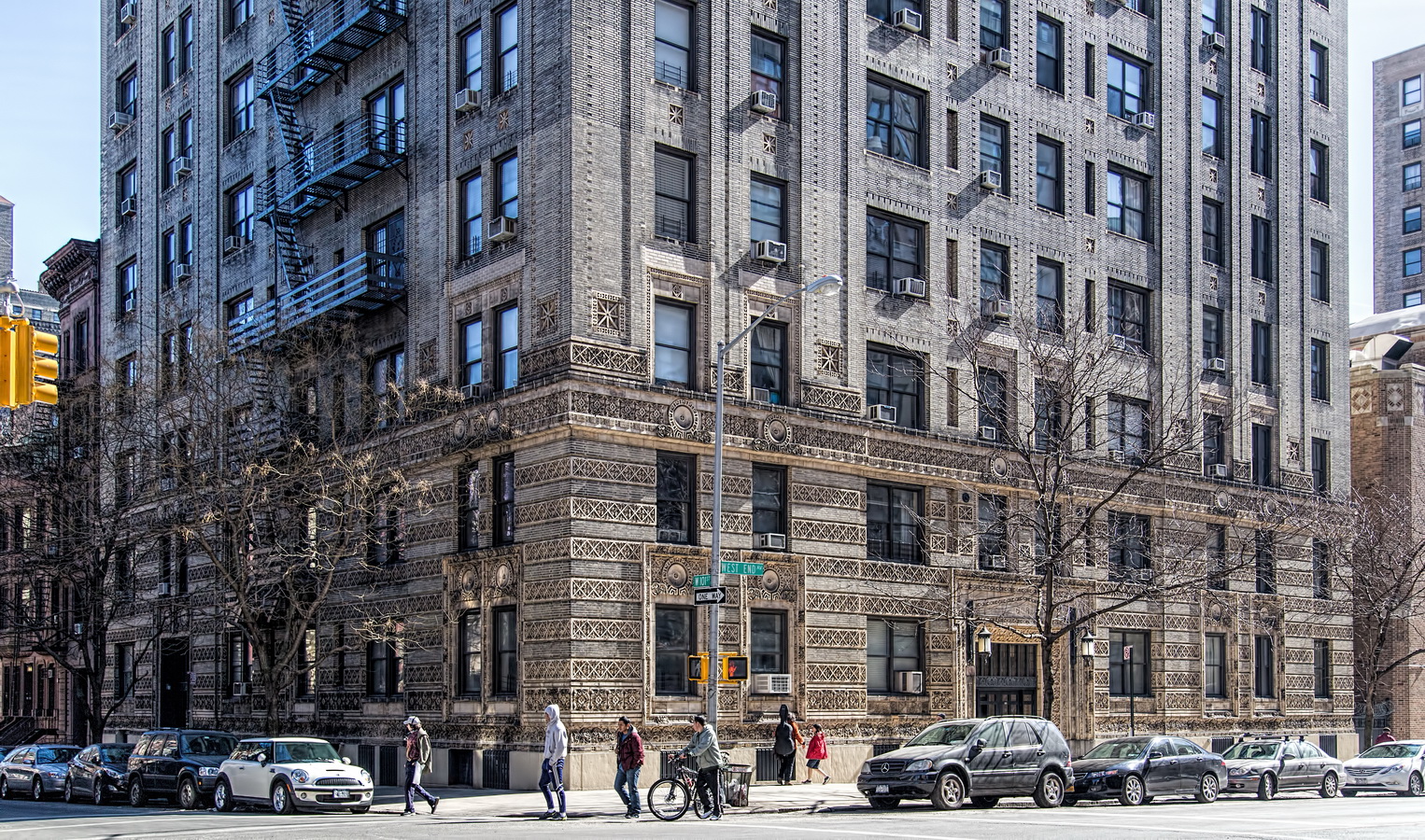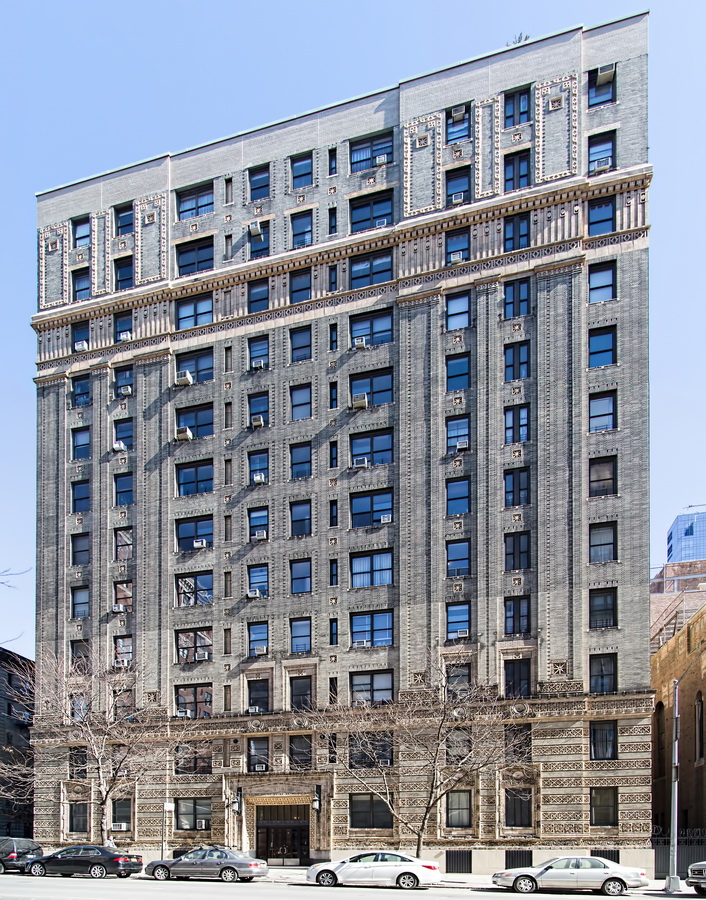“The New York City architectural firm of George & Edward Blum, specialists in apartment house design, was established around 1909 by two brothers of French ancestry. Their father had immigrated around 1851, moved to New York the following year, and was naturalized in 1874. George M. Blum (1870-1928) was born in New York City, but where he received his education is unknown. The family moved to France before Edward (Edouard) Isaac Blum (1876-1944) was born in St. Germain-en-Laye, a suburb of Paris, and then permanently returned to New York in 1888. Edward attended public schools in France (as well as the Lycée Carnot) and New York City, and the College of the City of New York in 1891-94, entered Columbia College in 1895, and graduated with a degree in architecture in 1899. He attended the Ecole des Beaux Arts in Paris c.1901-05. George followed his brother to the Ecole in 1904, though neither received a degree, and may have stayed in France until 1908. Edward returned to New York by 1906 and was employed in the firm of architect William L. Rouse. He may have been the lead designer for the Hendrick Hudson Apartments and Annex (1906-08), Riverside Drive and West 110th Street. Among George & Edward Blum’s first commissions in 1909-10 were five Morningside Heights apartment buildings, the Phaeton, Forest Chambers, Rockfall, Evanston, and Admaston, all designed for developers who had been associated with the Hendrick Hudson.
“The firm of George & Edward Blum received more than 170 commissions in Manhattan alone between 1909 and 1930, with the majority for apartment buildings and tenements. Andrew S. Dolkart and Susan Tunick, who produced a monograph on the firm, George & Edward Blum: Texture and Design in New York Apartment House Architecture (1993), identified the years 1910 to 1917 as the core period of the Blums’ most creative experimentation, when they produced a distinctive group of designs (among some 45 multiple dwelling projects) with unique ornament, usually executed with patterned brickwork and specially-commissioned geometric terra cotta and art tiles, many influenced by progressive Parisian design. This phase of the Blums’ work is exuberantly represented by the Dallieu (1912-13), 838 West End Avenue; the Beaumont (1912), 730 Riverside Drive at 150th Street; and the Vauxhall (1914), 780 Riverside Drive at West 155th Street, a ‘masterpiece of textile-like design.’ According to Albert Mayer, Edward Blum was the firm’s designer while George Blum was the business partner. The firm of George & Edward Blum was also responsible for the design of a number of loft, office, and manufacturing buildings, a few hotels, such as the Hotel Theresa (1912-13) at 2082-2090 Adam Clayton Powell, Jr. Boulevard, a few synagogues, a club, and a bank.”
– from BEAUMONT APARTMENTS designation report, NYC Landmarks Preservation Commission, by Theresa C. Noonan
George & Edward Blum Representative Buildings
- 18-20 East 41st Street (offices, 1912)
- The Dallieu (apartments, 1912)
- The Capitol (12 E 87th Street) (apartments, 1912)
- 780 West End Avenue (apartments, 1914)
- 210 E 68th Street (apartments, 1929)
- The Beaumont (apartments, 1912)
- The Vauxhall (apartments, 1914)
- Nine loft buildings for Simon Lefcourt’s Garment District empire (1910-1927)
George & Edward Blum Suggested Reading
- Wikipedia entry (George)
- Wikipedia entry (Edward)
- The New York Times: Streetscapes | George and Edward Blum | Crowning Achievements for Two Brother-Architects (March 2, 2008)
- The New York Times: Streetscapes/The Blum Apartment Houses; Deft, Nonconformist Touches, Many Since Vanished (October 17, 1993)
- Friends of Terra Cotta: George & Edward Blum: Texture and Design in New York Apartment House Architecture (1993, Andrew S. Dolkart and Susan Tunick)



